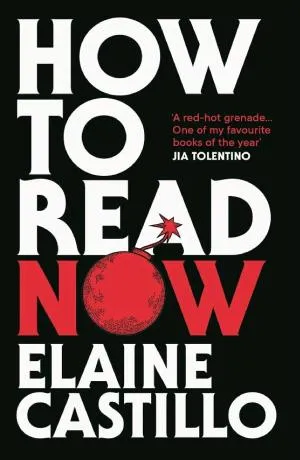
There is only so much space I can make for this controversy, both in these pages and in my life; controversies like this go beyond racial microaggressions—they’ve become predictable and occasionally lucrative trauma engines, and continually asking writers of color to produce a comment from the hot-take jukebox on the latest fuckup perpetrated by a dementedly racist and tone-deaf publishing industry is asking those writers to wipe a shit they did not take. What I’m much more curious about is what these fuckups reveal about readership: who we expect our readers to be, what we expect our readers to do, and how this might change.
When white readers claim to be made uncomfortable—as many I heard from claimed—by the presence of something like untranslated words in fiction, what they’re really saying is: I have always been the expected reader. A reader like this is used to the practice of reading being one that may performatively challenge them, much the way a safari guides a tourist through the “wilderness”—but ultimately always prioritizes their comfort and understanding.
That art should not serve to make us comfortable is such a basic argument I’m loathe to even repeat it. Yet the arguments about the comforts or disruptions of art cannot be held in good faith if we don’t address the fact that a white supremacist reading culture means we are conditioned to accept that some of our work is in fact routinely expected to comfort; that the work of writers of color must often in some way console, educate, provide new definitions, great epiphanies, and, most of all—that buzzword of both the commercial marketplace and political theater—be relevant. Whereas the work of white writers must be free to: offend, transgress, be exempt, be beyond politics, beyond identity—to delight, in other words, in the myriad fruits of its political immunity. And their readers must, in turn, always extend empathy toward that lucrative and culturally rewarded immunity—which is, after all, great art.
The logic of empathy says “I feel your pain”—but the logic of inheritance knows this transaction has always been corrupt at its core. The story I’m telling is not just something for you to feel sympathy for, rage against, be educated by: it’s a story about you, too. This work has left a will, and we are all of us named in it: the inheritances therein belong to every reader, every writer, every citizen. So, too, the world we get to make from it.
The problem is, if we need fiction to teach us empathy, we don’t really have empathy, because empathy is not a one-stop destination; it’s a practice, ongoing, which requires work from us in our daily lives, for our daily lives—not just when we’re confronted with the visibly and legibly Other. Not just when a particularly gifted author has managed to make a community’s story come alive for the reader who’s come for a quick zoo visit, always remaining on her side of the cage.
White supremacy is a comprehensive cultural education whose primary function is to prevent people from reading—engaging with, understanding—the lives of people outside its scope. This is even more apparent in the kind of reading most enthusiastically trafficked by the white liberal literary community that has such an outsize influence, intellectually and economically, on the publishing industry today. The unfortunate influence of this style of reading has dictated that we go to writers of color for the gooey heart-porn of the ethnographic: to learn about forgotten history, harrowing tragedy, community-destroying political upheaval, genocide, trauma; that we expect those writers to provide those intellectual commodities the way their ancestors once provided spices, minerals, precious stones, and unprecious bodies.
I’ve very often seen successful people of color framing their experiences of being the only person of color in their classrooms as narratives about struggle, rather than also being narratives about class and power; I emphasize often, because it seems to me that in fact many successful people of color in our mainstream media happen to be precisely the sort of people who grew up the only person of color in white towns. It is precisely because they grew up adjacent to whiteness and its social and economic privilege, precisely because they were well versed at an early age on how to adapt to and accommodate whiteness that they could thus use those skills as professional adults, living under white supremacy.
But the idea that fiction builds empathy is one of incomplete politics, left hanging by probably good intentions. The concept of instrumentalizing fiction or art as a kind of ethical protein shake, such that reading more and more diversely will somehow build the muscles in us that will help us see other people as human, makes a kind of superficial sense—and produces a superficial effect. The problem with this type of reading is that in its practical application, usually readers are encouraged—by well-meaning teachers and lazy publishing copy—to read writers of a demographic minority in order to learn things; which is to say, as a supplement for their empathy muscles, a metabolic exchange that turns writers of color into little more than ethnographers—personal trainers, to continue the metaphor. The result is that we largely end up going to writers of color to learn the specific—and go to white writers to feel the universal.